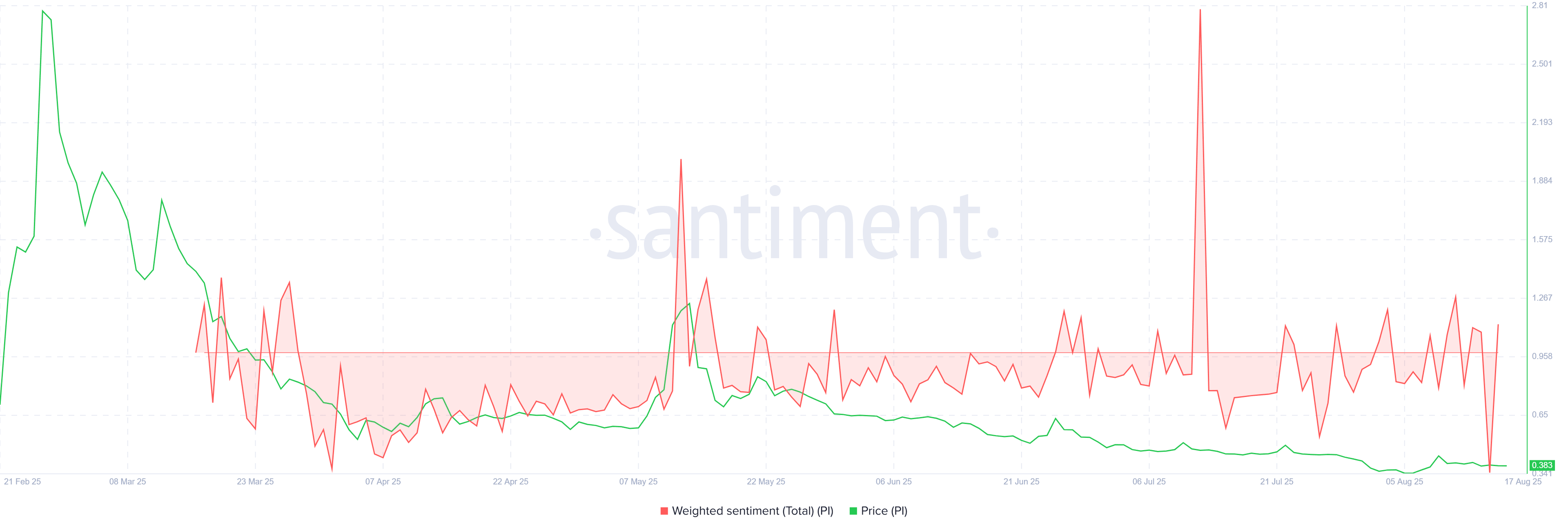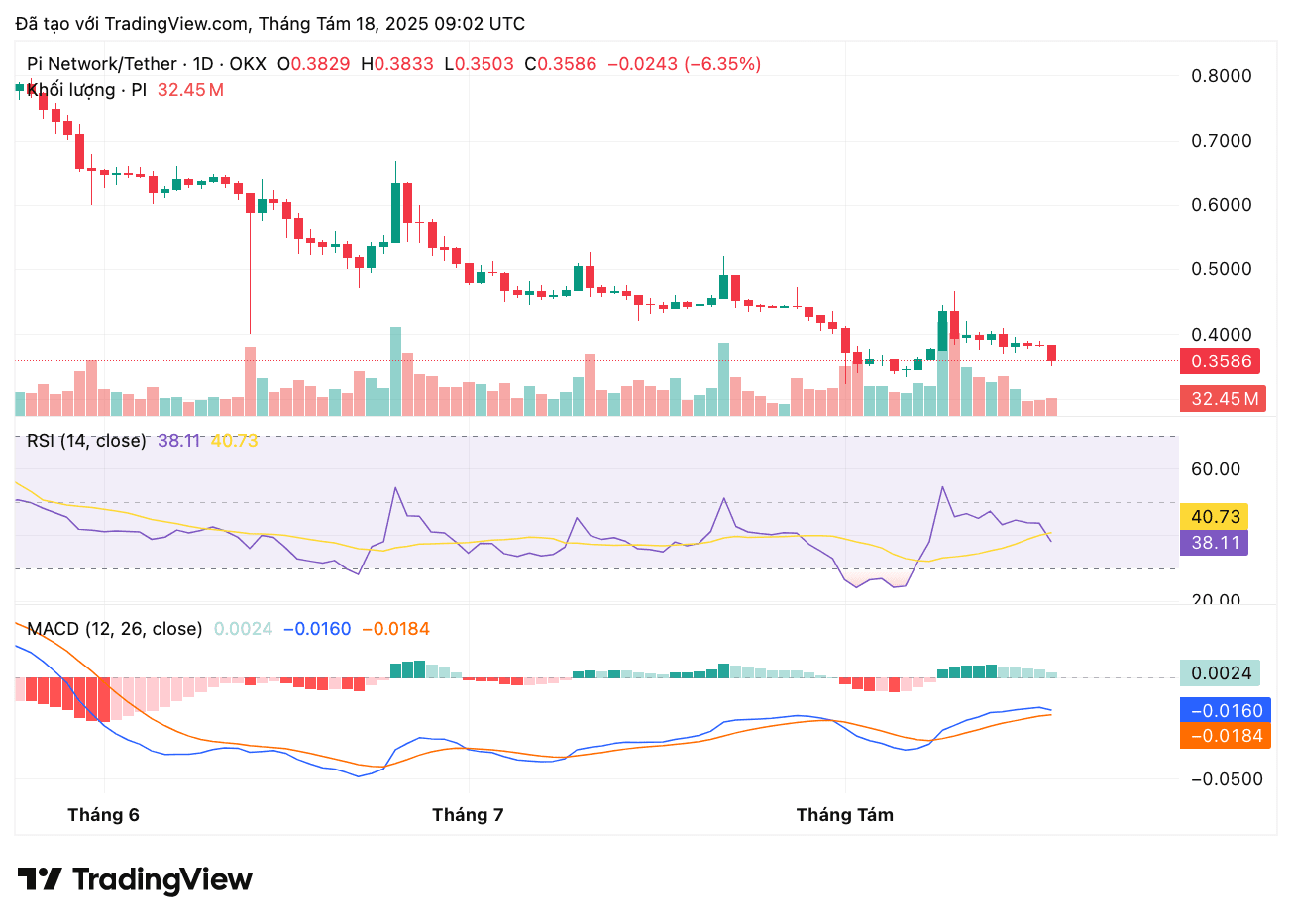In recent weeks, the Pi Network community has become more active than ever with rumors surrounding Pi Coin potentially being listed on Binance on August 15. This is seen as one of the biggest hopes for Pi holders, as Binance is the world's leading exchange capable of bringing any asset to millions of global investors.
However, the much-anticipated day passed quietly. There was no announcement from Binance or the Pi Core Team. This confirms earlier analyses from several experts, prominently Dr. Altcoin, who has repeatedly warned the community that both Binance and Pi Network are still not ready for such a significant decision.
Why Hasn't Binance Listed Pi Coin?
According to Dr. Altcoin, Binance has been monitoring Pi for a long time and sees many positive factors in the project: a large user community, real-life use potential, and a clear ecosystem development direction. However, from the perspective of a major exchange, Binance needs more than enthusiasm from the community.
There are three main reasons why Binance has not rushed to list:
Legal risks and transparency: Binance must always consider the legality of projects before listing. With Pi, the Open Mainnet roadmap is not yet complete, leading to a lack of transparency in actual trading capabilities.
Unclear tokenomics: The distribution, unlocking, and governance mechanisms of Pi tokens are still being refined. Without a sustainable structure, early listing could lead to excessive volatility and damage Binance's reputation.
Technological stability: The Pi Core Team is focused on running performance tests and stress tests for the blockchain, ensuring the platform is robust enough to support millions of transactions. This caution reflects a desire to build a reliable system before entering the global market.
Dr. Altcoin shares:
"Patience is the key. A rushed listing may help Pi's short-term price, but the long-term goal is to build a stable ecosystem with real value."
Pi Coin Price Outlook: Why Late August Could Be a Turning Point?
Despite disappointment over not being listed immediately, many analysts believe that late August could mark a recovery phase for Pi. This is due to a series of fundamental factors:
Reduced supply: The monthly unlocking rate of Pi will slow down, reducing at least 30% of new supply in the market. This helps alleviate selling pressure and improves supply-demand balance.
Expanding ecosystem: Pi is investing in promising projects such as OpenMind along with many other startups. This strategy aims to demonstrate that Pi is not just a token but the center of a burgeoning digital economy.
Real-world applications from AI App Studio: This platform allows for the development of AI applications on Pi, creating specific use cases rather than stopping at theory. When actual applications emerge, the intrinsic value of Pi will be reinforced.
Soroban upgrade: Pi's integration of Soroban – Stellar's smart contract platform – could provide a leap in functionality, bringing Pi closer to major blockchains like Ethereum or Solana in application scalability.
Overall, instead of relying on the "boost" from a Binance listing, Pi Coin is seeking to create upward momentum from the internal strength of its ecosystem. This is a slow yet sustainable approach, aligning with a long-term vision.
Investor Sentiment: Impatience but Still Hopeful
Pi Coin is currently facing significant difficulties in maintaining its upward momentum. After an extended decline, the coin has entered a consolidation phase, indicating that demand is not strong enough to create a clear recovery impetus.
According to the latest market data, investor sentiment towards Pi Coin has fallen to its lowest level in four months. This trend indicates that the optimism that once existed in the community is gradually being replaced by a cautious and skeptical mood.
The main reason stems from Pi Coin's continuous stagnation, failing to break free from the important resistance zone. This has caused many short-term traders to lose patience, as expectations for a strong growth phase remain unfulfilled.
In the last 24 hours, the market sentiment index has sharply declined, reflecting increasing disappointment. Investors are waiting for a positive signal – such as news of a listing on a major exchange or momentum from the ecosystem – but prolonged silence and limited price volatility have created an uneasy atmosphere.
Notably, this decline in confidence is not only reflected in short-term trading but also impacts the long-term outlook of some Pi holders. When uncertain about the project's future, they tend to be more cautious in new investment decisions, causing the inflow of capital into Pi to slow.

Despite the prevailing pessimism in the community, from a macro perspective, Pi Coin still shows potential recovery signals. One notable indicator is the Chaikin Money Flow (CMF) – a tool for measuring the strength of money flow. Currently, Pi's CMF is above zero, indicating that buying pressure has begun to overpower selling pressure.
This reflects the reality that, despite the impatience of some short-term investors, a new influx of capital is still seeking to take advantage of discounted prices to enter the market. If this trend continues, it will play a vital role as a support force, helping Pi avoid a deep decline and gradually solidifying the foundation for a new growth cycle.
Currently, Pi's RSI is fluctuating around 38, below the neutral zone. This reflects that selling pressure is still dominating the market, indicating that Pi is approaching an oversold state. When the RSI is this low, investor sentiment often leans towards caution, as selling pressure outweighs buying pressure. However, in many cases, an RSI below 40 can also suggest the possibility of an emerging support zone, where buyers begin to return to accumulate. If this index continues to drop close to 30, it will signal that Pi may fall into the oversold region, simultaneously opening up opportunities for a potential technical rebound in the near future.
Meanwhile, the MACD indicator remains in the negative zone, indicating that the downtrend still dominates the market. This reflects that the upward momentum is not strong enough to reverse, and selling pressure remains present. However, it is noteworthy that the gap between the MACD line and the signal line is gradually narrowing, signaling that selling pressure is weakening. If a bullish crossover occurs in the near future, this will be an important signal confirming the potential for a trend reversal, opening up opportunities for a new recovery for Pi.

In the context of the broader cryptocurrency market, Pi's opportunities become more apparent if the overall sentiment turns positive. As capital flows across the industry begin to return after a cautious period, Pi Coin – with its extensive community advantage and listing expectations – could become an attractive destination for investors seeking recovery opportunities.
Pi Coin is currently trading around $0.35 and shows a clear struggle between buying and selling pressure. In recent attempts, this coin has been unable to surpass the resistance level of $0.4, causing the price to be restrained and fall into a consolidation state after a prolonged downtrend.
The lack of momentum from buyers indicates that the market remains cautious, while selling pressure continues to prevail, making this altcoin more vulnerable to volatility.
If Pi Coin cannot maintain the crucial support level at $0.362, the likelihood of a downtrend will be reinforced, and the price may extend its decline, even towards the $0.34 area.
Conversely, a positive scenario could unfold if market sentiment improves and trading volumes return. If Pi Coin surpasses the $0.4 threshold and establishes this level as strong support, the downtrend will be negated, opening up opportunities to rise to $0.44. This would not only spark new optimism but could also serve as a significant reversal signal for the entire price structure of this altcoin.
Pi Coin is at a crucial crossroads. On one hand, the enormous community still holds many expectations; on the other hand, the lack of transparency regarding the Open Mainnet roadmap and technical barriers is slowing down the development process more than anticipated.
In the short term, the price of Pi is likely to fluctuate within a consolidation range, strongly influenced by investor sentiment. However, in the long term, the value of Pi will not come from listing rumors, but from building a sustainable ecosystem, creating real applications, and proving its ability to survive in a competitive market.
If the Pi Core Team maintains a cautious strategy and continues to expand applications, Pi could become one of the most notable blockchains in the coming years.




